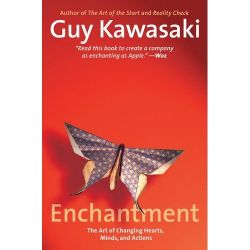Your logo is a business tool
March 28, 2011

Your logo is a tool, not art
We were sitting in the conference room the other day with a new client. He’s been in business for many years and is very successful. He’s ready to reallyramp up his marketing and tackle some lofty goals.
And we’re ready to help. (After all, that’s what we do)
He went on to tell us that he really doesn’t like his logo. It doesn’t tell his company’s story very well, it’s a little expected and in his opinion, it isn’t very attractive. So the first project he’d like us to launch is a logo re-design.
I took a deep breath and told him no.
Now… granted I said it with more words…and nicer. But basically I said this:
- No logo is going to tell the whole story of your business
- You have over a decade of equity in your current logo
- Your current logo isn’t costing you any customers or any money (no one’s not choosing you because of your logo)
- Your current logo is fine. It’s not perfect and we’d be able to come up with something better. But not so much better that it will line your pockets.
- Remember a logo cost is far beyond just the cost of designing a new logo. There are legal costs to register it, you have to re-print all of your business cards, letterhead, etc., your staff’s uniforms would need to be changed and your trucks would need to be re-vinyled. Then, there’s building signage etc, etc. etc.
I summed it up with… if the only reason you want to change your logo is because you don’t like it, it’s not a good enough reason. It’s not a piece of art you choose to put in your home, it is a business tool and your current logo is doing the job adequately.
I also told him, it was his company. And if he hated the logo that much and he gritted his teeth every day when he saw it and it haunted him in his dreams — we’d design him a new logo. But that if it was my money — I wouldn’t spend it there.
Do not get me wrong. A logo is a very important part of your marketing effort. Most logos suck and should be changed. But his didn’t. And it shouldn’t be changed for the subjective reason of his personal taste.
Your logo is a business tool. If it’s doing a good job — leave it be.
More

















